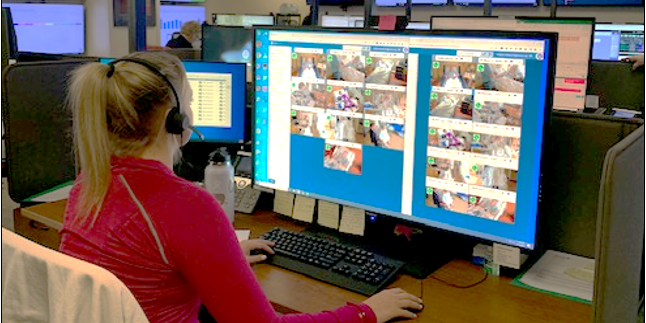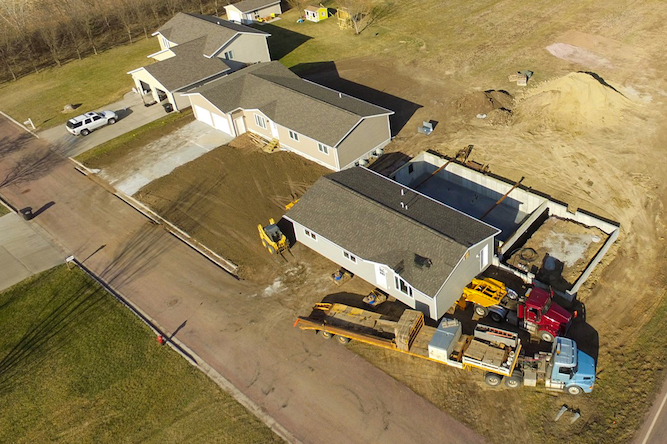Avera expands telemedicine efforts to virtual nursing
This paid piece is sponsored by Avera.
Anyone who’s been in the hospital knows the bedside nurse is key to your success. They help when you need it, answer questions, give you medicine and are there with a smile and pep talk when you’re getting down.
Amidst workforce challenges and increasing responsibilities, the bedside nurse is also very busy.
As a leader in rural health care, Avera continues to pioneer ways to provide quality patient care at every facility. The latest are virtual nursing and monitoring programs to free up bedside nurses and provide a vital second set of eyes when on-site assistance isn’t available.
“We all know we have a workforce issue across the health care industry,” said Ashley McMahon, a registered nurse and clinical nurse educator who helped implement the program. “Obviously, patient care is a priority so we looked outside the box to leverage technology for patients and alleviate some of the burden and work for bedside nurses.”
The virtual nursing program launched this fall at Avera McKennan Hospital & University Center in Sioux Falls, and Avera St. Mary’s Hospital in Pierre, with plans to expand. The program supports bedside nurses by doing various nursing functions virtually, including admission assessment, medication reconciliation, pain reassessments and second RN availability for independent double checks.
Virtual nursing for expanded patient care
This comes on the heels of Avera’s virtual monitoring program, which launched earlier this year, also in Pierre and Sioux Falls. This program virtually monitors patients who are at increased risk of falling and redirects them to wait for the care team before standing, or alerts on-site providers to ensure patients get help.
Both programs have one goal: the success of the patient.
Intake assessments can take more than 30 minutes. While vital to the patient’s care, it takes time away from hands-on caring for patients’ needs.
The virtual nurses work together with bedside nurses to ask questions and also talk with patients who may be anxious or scared of what’s to come.
“I’m so glad to be part of this,” said Colleen Johnson, a registered nurse and a virtual nurse. “It’s an extension of the care they get from the bedside nurses. We’re extending that for each patient so they have an extra set of eyes.”
How it works
Using the cameras, speakers and microphones in the patient room, the virtual nurses are able to see and hear the patient, zoom in on equipment in the room such as IV pumps or monitors, and use two-way video to communicate with the patient to complete a variety of nursing tasks.
The bedside nurse requests assistance from the virtual nurse, who will then appear on a TV screen in the patient room. The camera is either brought in on a cart or hardwired into the room. Patients are shown how the equipment will be used. No video is recorded and there are also not cameras in restrooms.
The virtual nurse then starts their admission tasks, allowing the bedside nurse to care for other patients. The bedside nurse will be notified of any critical items identified during the assessment.
Virtual nursing was developed pre-COVID but growth ballooned during and after the pandemic as health systems face workforce shortages.
Virtual technology is key to Avera’s commitment to creating an integrated health system that supports its rural facilities, said Kristine Becker, Avera Medical Group Director of Virtual Medicine. Avera has long done something similar as part of its virtual ICU program but this expands it into other patient areas. Avera also offers virtual care by connecting specialty providers in a clinic setting. This program shifts focus to what’s needed in the hospital setting.
“Innovating so we can extend our care teams is one way Avera is able to offer care across such a rural footprint,” Becker said.
For now, this virtual nursing and monitoring technology just serves Avera hospitals in Sioux Falls and Pierre, but expansion is in the future.
“Imagine we have this technology in every patient room in every hospital across Avera. Think about the doors it opens; it’s not just a virtual nurse who can help a patient. It could be a therapist or a pharmacist who needs to connect, or even an out-of-town family member,” Becker said.
Early successes and potential
Already McMahon is getting good feedback from bedside nurses who say they have more time to spend with patients.
If the virtual monitoring program is an indicator for potential success of virtual programs, Avera is headed in the right direction. Since the program’s inception in May 2023, the 24/7 virtual monitoring program has decreased falls with more than 6,800 redirects between May and October. In some of these cases, patients would have needed 24/7 one-to-one monitoring with a bedside provider.
In smaller hospitals more eyes on a patient can be vital during busy times or when fewer people are on site, such as overnight.
“Giving nurses that additional person is valuable,” Johnson said. “When there isn’t a second set of hands on site, there will be virtually.”
Learn more about careers at Avera







